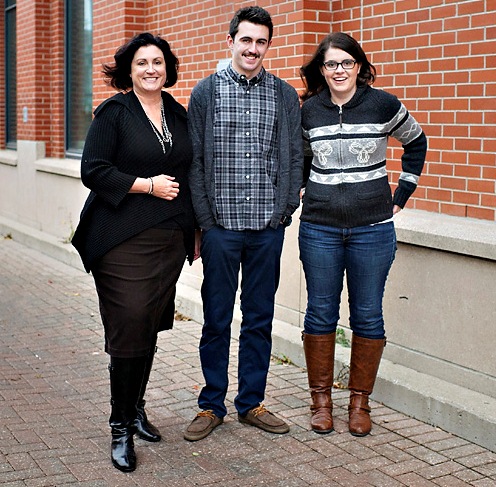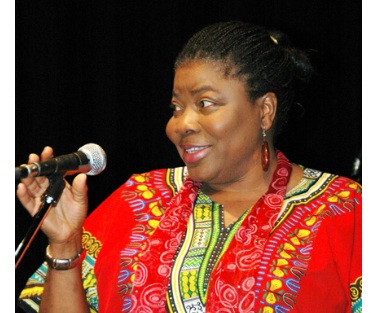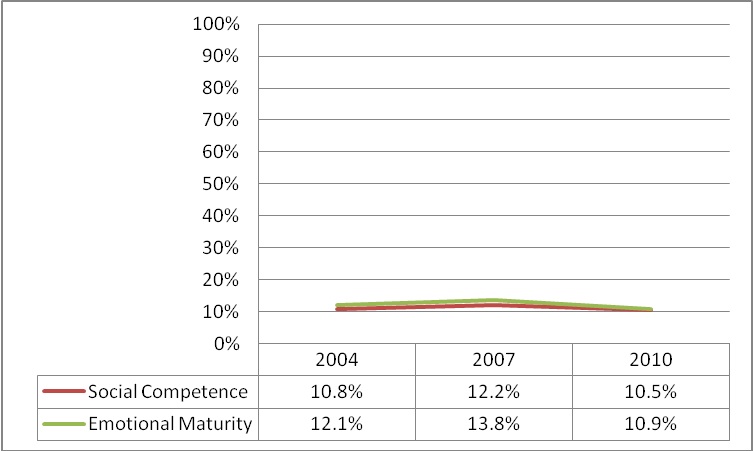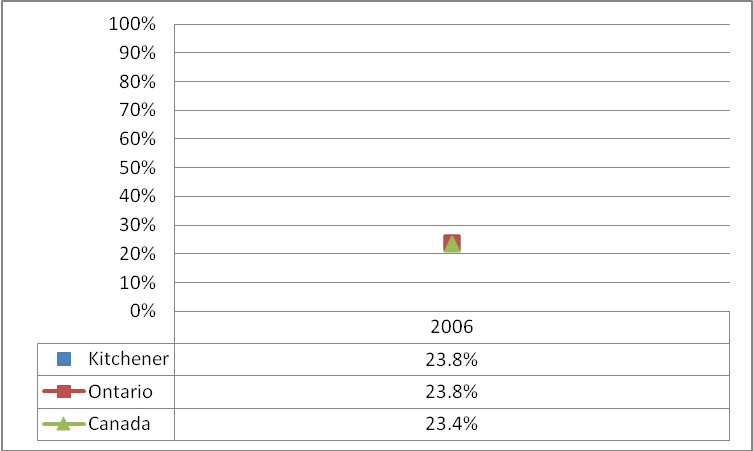Posts Tagged ‘snapshot on crime’
Posted on: November 12th, 2013 by Smart on Crime
I live a busy life. Like many of you, I wear a lot of hats in our community. I have a really hard time saying ‘no’ to people, causes, and commitments that intrigue me.
Which is how I found myself parked in gridlock on Toronto’s busy Lakeshore Drive one drizzly, grey, and miserable November evening … trying to make my way home to Waterloo from a series of meetings in the downtown. As usual, I was late. Also, as usual, I had been parenting my youngest son from afar via BBM … What’s up? Good day? How was football practice? Have you eaten? What homework do you have? Did you put the dog out? Always ending with: I love you, Peter. I love you too, Ma.
Peter’s responses were predictable. At 17, he was happy to have the house to himself. Sitting in my car, I could picture him in my mind: He came home from school, dumped his gear behind the sofa, gave the dog some love, headed straight to the fridge, and then upstairs to have a hot shower. He was likely comfortably lounging in our family room, making his way through the multitude of sports channels on cable. I knew he was safe, warm, fed, and had his beloved furry companion by his side.
As I inched my way towards a grey and dreary intersection on Lakeshore, I spotted the inevitable dance of captive motorists being courted by ‘squeegee kids’ with their proactive offers of clean windshields. Despite a 1999 provincial law that outlaws it and recent City of Toronto calls (2011) to come down hard on panhandlers, squeegeeing is the norm in Toronto: Cars stop at a light and nervous drivers avert their eyes or uncomfortably acknowledge the young people who approach their cars. I’ve been in this dance before, always leaving the dance floor with a sense of unease and emptiness.
I did the quick calculations. I was going to be the first car in line at the intersection. I had some spare change in the car, but I also needed a coffee. It was raining. I didn’t need my windows cleaned. I turned the radio up and did my best to pretend that I was an island.
I pulled up to the red light. Thoughts of Peter passed through my head: I hope he’s doing his homework.
I looked up and saw a young man standing on the boulevard. He looked nervous. He also looked wet and cold. His green eyes instantly reminded me of Peter. What if?
I couldn’t stop myself. I rolled down my window and called him over. His name was Joel. He was 17. I told him that I knew that. We chatted. I bypassed the spare change, reached into my designer handbag to open my designer wallet and gave him paper money. I gave him my business card. I asked him to call his mom. I got honked at. He very quietly thanked me. He packed up his backpack and crossed the street in front of me. He waved, walked, and then ran back to my window. He thanked me again and told me that he was going to get something to eat and that he would call his mom.
I turned off my radio. I wondered if Joel would follow through. I knew the chances were slim, but I had to believe that maybe, just maybe he would. I knew that many would ridicule me for thinking so. I had to hope.
I headed home to my son, who was still safe, warm, fed, and had his beloved furry companion by his side. I thought about my busy life and wondered if my work – the politics, the teaching, the community building, and the volunteer work – was helping or hindering my own social fabric. I love you Peter.

Karen Scian and her “Social Fabric”
Author: Karen Scian is a Waterloo City Councillor and Chair of the Finance and Strategic Planning Committee at the City of Waterloo. She holds a Bachelor of Science from the University of Waterloo, a Bachelor of Education from Western, and a Master of Arts in Leadership. Karen has spearheaded Waterloo’s commitment to open and transparent government by hosting innovative online events such as an All-Access Budget Townhall, Twitter Townhalls, and working with the community to revamp the City of Waterloo’s Citizen Committees. Karen is an instructor at Conestoga College’s School of Business and Hospitality, teaching Civic Engagement, Urban Studies, Ethics, and Sustainability Management to tomorrow’s leaders. She is also a trustee of the Waterloo Public Library and the Chair of the Board of Directors for Community Justice Initiatives (CJI), a local restorative justice organization.
Posted on: October 30th, 2013 by Waterloo Region Crime Prevention Council
Thanks to the Waterloo Region Crime Prevention Council for their 2012 report A Snapshot in Time: The Root Causes of Crime in Waterloo Region. The report has been a conversation starter for important dialogue in our community. It shines a spotlight on the root causes of crime locally, and uses calls to our Centre’s 24 Hour Crisis and Support Line as a data point related to local sexualized crimes.
We know that securing data about the prevalence of sexual violence can be challenging; sexual assault is the most under-reported violent crime in Canada. In 2012 the Waterloo Regional Police Service received 558 sexual assault reports. While that number itself is alarming, we only begin to understand the magnitude of sexualized crimes in our community when we consider that less than 10% of sexual assaults are reported to police nationally. Therefore, pulling data from a number of sources enhances our understanding of this complex issue.
Over the years, our crisis call numbers have fluctuated. In the last decade, there’s been a trend towards a moderate decline in the number of calls received, but the overall demand for our services has increased significantly. The explanation for this is simple; historically we provided more basic information related to services and supports on our crisis line. With much of that information now readily available online, the calls we most often receive today are supportive in nature or focused on crisis intervention.
With new ways of communicating emerging, our Centre has begun to explore the option of incorporating live online support into our crisis and support services.
Who else is involved in addressing this issue?
Awareness of the prevalence and impact of sexual violence has begun to increase regionally, thanks to the commitment of community partners to work in a spirit of collaboration.
In 2007, our community began to mobilize on this issue. A number of service providers formed a network which evolved into the Sexual Assault Response Team of Waterloo Region (SART). SART is now a community coordinating committee made up of 18 partner agencies from the criminal justice sector, the health sector, and the social services sector.
In 2012, SART launched a community protocol for responding to sexual assault in our region. The first such protocol of its kind in Waterloo Region, its purpose is to give service providers a broader foundation for the work they do. The protocol establishes a common understanding and framework for the provision of services to survivors of sexual violence, enabling greater coordination and collaboration between community partners.
What should be done?
Sexual violence impacts people of every age and cultural background, and has devastating impacts on individuals, families and communities. Every survivor, regardless of gender, deserves access to specialized support services in our community to promote healing.
As a region and more broadly, we need to balance our investment in support services for survivors of sexual violence and with public education campaigns aimed at prevention. We have consistently seen that early-intervention and prevention are necessary and cost effective.
It is important to understand, however, that sexual violence is primarily perpetrated by men, against women, children, and trans people.
According to a 2006 Statistics Canada report, more than one in three women will experience some form of sexual assault in her adult lifetime (p24). Over 93% of reported adult sexual assault victims are female, while 97% of those accused are male (p37).
As such, we need to consider social constructions of gender when looking at the prevention of sexualized crimes. Sexual violence is about power and control, not sexual desire. It is about aggressively dominating someone else.
This knowledge was the impetus behind the creation our Male Allies Against Sexual Violence (MAASV) program in 2008. MAASV is a unique public education program focused on working with men in positions to influence male youth (such as coaches, faith leaders, teachers, and fathers). The program explores how popular conceptions of masculinity can limit men’s freedoms and harm others. MAASV encourages young men to treat women with fairness, equality and respect and to stand up and speak out on gendered violence. (More information on MAASV can be found here: www.MaleAllies.org)
Sexual violence is pervasive, but it’s not inevitable. Through public education, social change is possible. A better future exists for our daughters and our sons.
 Author: Sara Casselman is the Public Relations & Operations Manager at the Sexual Assault Support Centre of Waterloo Region. In the anti-violence against women sector for more than a decade, Sara has been recognized provincially as a Leading Women, Building Communities Award Recipient (2011) and was featured in The Record’s 40 under 40 (2012).
Author: Sara Casselman is the Public Relations & Operations Manager at the Sexual Assault Support Centre of Waterloo Region. In the anti-violence against women sector for more than a decade, Sara has been recognized provincially as a Leading Women, Building Communities Award Recipient (2011) and was featured in The Record’s 40 under 40 (2012).
Posted on: October 15th, 2013 by Smart on Crime
Surprise!! Surprise!! “Length of involvement in schooling significantly impacts participation in criminal activity”, reports the recently released Snapshot on Crime: Root Causes of Crime in Waterloo Region. It is good to have the statistical evidence to corroborate what we already know as parents, teachers, and concerned citizens.
To reframe, length of involvement in schooling increases positive life outcomes for youth. High school graduation and access to post secondary education enhances socioeconomic status in adulthood regardless of growing up in a low income family, parents’ level of education or single parent household. Good news. Although, being born poor sucks, it is not a life sentence. Education however is a big deal and exclusion from it puts you firmly on the school to jail pipeline. Education is the great leveler only if you have it, a child denied this basic human right is hurt for life and community safety is impacted. Access to post secondary education reduces the likelihood of adult criminality, increases employability, ability to stay employed and overall socio economic status. Access to education is a matter of equity and social justice, therefore addressing systemic exclusion and disenfranchisement is crucial.
This is nothing new. The Ontario Royal Commission on Learning and the Review of the Roots of Youth Violence report all decried non inclusive curriculum and recommended schools that reflect minorities and policy changes to address lack of engagement and under achievement of young males, black males, in particular. If black boys face more exclusion from the school system, youth who drop out of school are at higher risk for criminality. Black males are overrepresented in the criminal justice system; it then becomes imperative to challenge our beliefs about black boys being inherently criminal. Being young is a not a bad thing. I have yet to meet any person who was never young once. Being a male child is not bad either and there are communities where people go to any length just to have a male child. Being black is no disaster despite the media characterization of Black masculinity. But still, black males are more often the targets of physical aggression, racism, criminality and criminal victimization.
The African community always knew this. Ten years ago, we initiated an after school homework support program to promote school retention, graduation, equitable access and participation. The homework club provides a safe space where any minority child can feel at home to receive help right where they are at and develop the confidence that facilitates integration into the school system. Our neighbors in Toronto successfully advocated for Africentric schools and now have three, amid fierce debates on both sides. I do not intend to spark debates about segregation or integration. Both are not mutually exclusive.
Through our homework program, we work to mitigate the gaps in the mainstream schools. We provide culturally relevant books, resources and instructional materials that honor African and indigenous orality. We connect youth with strong black role models through career talks, job shadow and motivational talks. We immerse our volunteers, white and black, in the culture and life of the youth. Many volunteers come in wanting to help the kids, but they tell us when they leave (some never leave) that they are the ones helped significantly. Many of them want to be teachers and we gladly provide them with reference letters to get into teachers college. We also organize a parent forum to encourage parents to be their child’s best advocate, to understand the assumptions behind the streaming of students that can result in some youth not having the courses required for post secondary education which hinders their ability to maximize their potential and can permanently alter their life trajectories.
Waterloo region is now the 7th top destination for new immigrants and refugees. We cannot reverse the inflow of immigrants as immigration is Canada’s lifeline in the absence of a replacement population. We could admit only people who are not 15-24, male or black but, 20-somethings tend to settle down and have cute little babies, who soon become teenagers. What if we as a community ensured teachers are trained to recognize the world views and assumptions underlying the fear of big tall black boy children? What if teachers, police and other service providers re-examined our social construction of the black male child? Are there things Waterloo Region can learn from Toronto’s Africentric schools about how to adapt and integrate African, indigenous epistemology and pedagogical practices into mainstream schools so that we can better engage young black men? Opponents of Africentric schools describe them as temporary, not cost effective solutions and appeal to our Canadian ideals of cohesion and multiculturalism. I do not agree with either segregation or integration but cohesion and multiculturalism are myths if they exclude some and attempt to promote assimilation under the guise of integration.
Our homework club struggles for lack of funds but the reason it continues year after year is because the children keep coming back for the acceptance, respect, honor and understanding they receive there.

Funke Oba
Author: Funke Oba is the immediate past president of the African Canadian Association of Waterloo Region & Area. Funke teaches social work, is a diversity trainer/consultant and community based researcher with a focus on social justice, equity and social construction of complex phenomena.
Find more community responses from colleague’s in Waterloo Region who also work with young men:
Posted on: September 17th, 2013 by Waterloo Region Crime Prevention Council
The length of involvement in schooling significantly impacts participation in criminal activity and the probability of incarceration. The table below tracks the percentage of residents in the Kitchener-Cambridge-Waterloo Census Metropolitan Area that do not have a high school diploma.
Data Source: Statistics Canada, Census (Released every five years)
Story Behind the Numbers
In 2006, 23.8% of residents in the Kitchener-Cambridge-Waterloo CMA did not have a high school diploma. This is the exact same as the Ontario provincial average and slightly above the Canada average of 23.4%. However, when the results are examined for individuals under the age of 35, the Waterloo Region has more residents without a high school diploma than the Provincial average. This is significant because individuals under the age of 35 are at the highest risk of participating in criminal activity.
Read the Community Responses
Posted on: September 17th, 2013 by Smart on Crime
It is no surprise that the length of involvement in schooling significantly impacts participation in criminal activity and the probability of incarceration, as found in Snapshot in Time: Root Causes of Crime in Waterloo Region. In fact, this has been well-known in the education sector for many years – which explains the great lengths to which school boards go in mitigating against this problem.
As part of the Student Success Learning to 18 Strategy — through the Re-engagement (12 & 12+) Initiative – school boards contact students who have either left school or have not been attending to re-engage them in their studies to complete their Ontario Secondary School Diploma (OSSD). Funding is provided to the boards to support programs for these students once they return and in Waterloo Region’s Catholic Schools we dedicate a significant amount of staff time to, first, actually locating the whereabouts of these students and then helping them complete their required volunteer hours and/or registered them at our St. Louis Adult Learning & Continuing Education Centres or their home secondary school to accumulate credits toward the OSSD.
The tracking of all of our in-risk students (Grade 9 to those that have left our system without an OSSD) is reported to the Ministry of Education along with other student success tracking data through “Taking Stock” reports. These reports outline the following:
- how many students our schools are tracking that are in-risk;
- are these students attached to a caring adult;
- was their timetable individualized;
- are they getting advice on pathways planning;
- has a strengths profile been created for the student.
Our own internal tracking for students who have left our system without an OSSD looks at:
- number of students contacted;
- did they register for courses, how many;
- how many credits did they accumulate.
In addition to the above some key initiatives are in place to meet the needs of all of our students on their way to successful completion of the OSSD.
- Specialist High Skills Majors allow students to focus on a future career through a bundle of classroom courses, workplace experiences and sector certifications
- Expansion of Cooperative Education allows students to count this hands-on learning towards two compulsory high school credits
- E-Learning provides students with online courses and allows teachers to share resources across the province
- Dual Credits count toward a student’s high school diploma as well as a college certificate, diploma or apprenticeship certification
- Credit rescue programs intervene prior to a student experiencing failure in a course
- Credit recovery programs allow students who have failed a course to only repeat expectations where they have been unsuccessful rather than redoing the whole course
- Supervised Alternative Learning programs allow students to work full-time, get mental health supports, volunteer hours and accumulate credits
So…when it comes to playing our role in reducing the number of local residents without a high school diploma you can rest assured Waterloo Region’s Catholic Schools are front and centre in closing the gap.
Author: David DeSantis is the Superintendent of Learning for the Waterloo Catholic District School Board and responsible for Student Success, Secondary Schools, St. Mary’s FOS, Leadership Development and Succession and 21st Century Teaching and Learning.
Posted on: September 10th, 2013 by Waterloo Region Crime Prevention Council
You might have noticed it in the title… the operative word being “early”. Every three years Senior Kindergarten teachers evaluate their students using the Early Development Instrument. This tool provides scores on a number of factors, two of which directly relate to crime prevention. Social competence measures a child’s interactions with others, ability to control their own behaviour, and cooperation with others. Emotional maturity measures a child’s ability for impulsivity control, ability to deal with feelings, and empathy for others. The percentage of children scoring low on these indices is noteworthy because antisocial behaviour among children is associated with an increased risk of persistent delinquency and criminal involvement later in life
The Statistics
 Data Source: Ontario Early Years Centre, A Community Fit for Children Report (Released Every Three Years)
Data Source: Ontario Early Years Centre, A Community Fit for Children Report (Released Every Three Years)
The Story Behind the Numbers
The percentage of children scoring low on the social competence and emotional maturity index declined from 2007 to 2010. However, despite the improvement Waterloo Region did not score as well as Ontario in 2011 which had 9.3% of children score low in social competence. Waterloo Region was also lower than Ontario, at 10.3%, on emotional maturity but this difference was not statistically significant. These numbers suggest that prevention opportunities exist through a focus on improving children’s emotional and social readiness for school.
Read the Community Responses:
Posted on: September 10th, 2013 by Smart on Crime
When reviewing the Snapshot in Time: Root Causes of Crime indicator comparing the 2007 and 2010 results of the ‘social competence’ domain of the Early Development Instrument, Waterloo region shows some improvement. 1.7% less children scored low on ‘social competence’ in 2010 than did three years previous, and this difference is statistically significant. While encouraging, the percentage of children in Waterloo Region who are vulnerable (scored low) on this domain is still 1.2% higher than that of Ontario as a whole. This tells us that we still have room for improvement as well as an opportunity to set a goal to match or do better than the Ontario average in this domain. Since children in Waterloo Region are not scoring significantly different than Ontario as a whole on the ‘emotional maturity’ domain and in fact the percentage scoring low has decreased, we want to continue with this trend. The inclusion of these indicators in understanding crime prevention serves as a reminder that the importance of early learning goes much beyond the reading, writing and arithmetic facets.
Currently, there are many organizations and agencies involved in addressing this issue in the community services sector. Ontario Early Years Centres provide universal, free access to early learning and parenting programs for children age 0-6 and their caregivers. Early Development Instrument data is used in program planning to help ensure that programs encompass the most current needs of the children and that programming brought into other sites across our communities are geared to address the areas of child development that need improvement. Operating as a “hub”, Ontario Early Years also connects families with other resources in the community that can provide services related to the early development of children, including social and emotional development.
Community and Community Health Centres, Neighbourhood Associations, Social Planning Councils, non-profit organizations such as the YMCA and KidsAbility, to name a few, also place great value on early child development as an up-stream approach to preventing negative child outcomes. Beyond the community services sector, local school boards, municipalities and public health units similarly use data on social and emotional development for planning programs and services for families.
Throughout my time working in the community services sector, I have seen how hard agencies work together not only to ensure that we are aware of the importance of early child development, but also to provide services that work towards reducing the number of vulnerable children. Programs that promote and offer early learning opportunities need to be prioritized, implemented and given a chance to prove their value in the long term. It is especially the universal programs which have the most impact.
 Author: Amy Romagnoli is the Data Analysis Coordinator at the YMCA Ontario Early Years Centre, working with data related to the developmental health and well-being of young children in Waterloo Region. She holds a Master’s degree in Sociology from Wilfrid Laurier University.
Author: Amy Romagnoli is the Data Analysis Coordinator at the YMCA Ontario Early Years Centre, working with data related to the developmental health and well-being of young children in Waterloo Region. She holds a Master’s degree in Sociology from Wilfrid Laurier University.
Posted on: August 26th, 2013 by Smart on Crime
A couple of years ago I was blessed with the opportunity to volunteer with the vulnerable sector here in Kitchener/Waterloo. Specifically, I volunteered with homeless youth under age 25. During this time I was able to get to know many of the youth and listen to their stories. My very first shift I went home an emotional wreck after having a conversation with a young girl not much older than my own daughter.
It wasn’t long before I became acutely aware of the higher incidence of drug use, mental health problems and criminal activity among this population.
Someone said to me one day, ‘they have a choice, we all have choices.’ My reply was ‘sure we all have choices but we have not all been given the same tools to make good choices. How can I compare myself, who grew up with 2 upstanding parents and all the social support a child should need to someone who was sexually abused from the time they could walk or someone who was given their first hit of crack by their own mother at the age of 16.’ Unfortunately many of our homeless population were not raised with good role models or a good set of standards. They once left the hospital as precious, innocent and adorable as any other infant. What they went home to however, is more often than not less than acceptable. Fast forward several years and we find an adult struggling with addiction, mental health issues and homelessness all leading to criminal activity.
Here we find the beginning of a two-way cycle. Those who are homeless have a higher probability of ending up in prison while those being released from prison have a higher likelihood of ending up homeless. Once someone has a criminal record it is very difficult to find a job no matter how hard they try to change their life around. Often the rejection turns them back to crime. The same goes for substance abuse where substance abuse often leads to homelessness and homelessness often leads to substance abuse. Addictions often cause someone to lose their job and housing. Using drugs or alcohol also becomes a way to cope with life on the street.
On the other side we have a society that is often quick to judge and quick to condemn often due to a lack of awareness. People feel uncomfortable with it and try to look the other way. It’s easier to make donations to charities such as to the food bank than to look in the face of a homeless person on the street.
While food banks and shelters do a great job of providing for immediate needs, they are merely band-aid solutions. They treat the immediate problem not the root of the problem. What we need is to create awareness for other fundamental necessities for tackling homelessness and the crime it brings with it.
We need a plan to create awareness of costs of providing stable housing versus the much higher costs of providing services to the homeless. (ie. Institution, shelters, healthcare, and social services) It is difficult for someone without a place to call home to receive and accept the help they need for addiction and mental health. Without this there is difficulty in reducing the crime rate. Those who seek treatment such as rehab often have nowhere else to go but back in the same street or shelter environment, making relapse highly likely. It’s a set-up for failure. When we provide those in need with stable housing we give the opportunity to live with dignity, reduce crime, reduce addiction and give the opportunity for better success. It is a win, win situation. The more people we help get into stable housing the less financial burden on society and less crime in our community. We build a system that encourages social competency. Give respect to gain respect. This is the message we need to get out. We need to put as much effort into creating awareness and fundraising for this as we do when collecting food and socks.
The diagram below shows the connection between homelessness, substance abuse, mental health, crime and unemployment. If we take homelessness out we have a better chance at battling the other problems.

Lets help society to see the person behind the face. Lets take the homeless away from the street environment and give them a place to call home and give them some dignity and a foundation in which to grow.
 Author: Sheri Cartwright
Author: Sheri Cartwright
In the past Sheri has volunteered with homeless youth in Kitchener at ROOF – Reaching Our Outdoor Friends. Currently she volunteers for the KW Youth Basketball Association as volunteer coordinator and coach. She also runs the Community Dialogue website and is involved in community building and creating awareness in hopes of helping to break down barriers and stereotypes to help create a healthier, safer community. She graduated from Health Studies at UW last year and recently started Dynamic Health Promotion.
Find more community responses from colleague’s in Waterloo Region who also work to reduce homelessness:
Posted on: August 21st, 2013 by Smart on Crime
People who are homeless are far more likely to be victims of crime than are people who are housed. One Toronto study determined that 46% of homeless women and 39% of homeless men surveyed had been physically assaulted within the previous year. Homeless youth fared worst of all, with 69% reporting having been attacked. Another study found that sexual assaults against women who are homeless are both more frequent and more violent than those against women who are housed1. Preventing crimes against vulnerable people by supporting them as they move through homelessness to housing is one of the priorities of YWCA Kitchener-Waterloo.
It goes almost without saying that the overarching cause of homelessness is poverty, but not all people who are poor become homeless. Not all people who become homeless stay that way for long. Some of the factors that make it more likely that poor people will become and stay homeless include mental illness, addiction, cognitive or physical disability, family breakdown and social isolation. And social isolation is a much bigger part of the destructive cycle of homelessness than most people realize.
People who are homeless can experience social isolation because they’re separated from their families and communities, because prejudice and fears about homelessness keep others at a distance, and sometimes because their own shame about their circumstances prevents them from reaching out to others. As their social isolation increases, over time their social skills can diminish, and with the erosion of their social skills can come the loss of even more of their already depleted circle of support. The absence of social support causes problems like higher rates of mental health issues and physical illnesses, increased use and abuse of drugs and alcohol, and engagement in risky sexual behaviours. Thus, social isolation doesn’t just worsen the pain of homelessness, it perpetuates and strengths the cycle itself.
Among our other programs, YWCA Kitchener-Waterloo offers emergency and transitional and permanent, affordable housing to women and families and trans individuals who are or have been persistently homeless. We try to build housing and supports that make the people whom we serve know that they are welcome and valued members of our community, because we believe that this knowledge is critical to their mental and physical well-being and to their future housing stability. So that we could better understand and enhance their experiences of social inclusion, over the winter and spring of 2013 we asked the tenants in one of our housing programs to join us over coffee and cookies in some conversations about community.
The women who came together had all been homeless prior to coming to our program. Some had been housed with us for as few as four months, others as many as 24 years. The women told us about the things we do well to foster their sense of belonging and about some things we should do better. And they told us that it was their building’s community feeling – not its bricks and mortar – that made them feel supported and secure. They said that it was having people to turn to in times of sickness or crisis, having people to encourage them to overcome their challenges and reach their goals, to share activities and interests, simply having people to talk to, that made them feel safe. It was, in the words of one woman, ‘knowing other people care’ that made them feel that they finally had a home.
YWCA Kitchener-Waterloo is privileged to have the resources to provide the buildings and the professional, formal supports that some people who are homeless require. But for just about all homeless people, informal social supports can make the experience of homelessness more bearable and much safer. For some people, such supports can be all it takes to break the cycle of homelessness. Share a meal with a diner at St. John’s Kitchen. Play a card game with a guest at an Out of the Cold site. Teach a new skill to a youth at ROOF. Stop and listen to the story of a woman on the street. Give of yourself, emotionally and practically, for just a few minutes or a few hours, to make a critical difference in the mental and physical health, happiness, confidence, stability and safety of a vulnerable person.
1. Centre for Urban and Community Studies, University of Toronto, Research Bulletin #37, September 2007
 Author: Elizabeth Clarke is the Chief Executive Officer of YWCA Kitchener-Waterloo, an multi-service organization that provides emergency, transitional and permanent supportive housing to women, families and trans individuals who are homeless.
Author: Elizabeth Clarke is the Chief Executive Officer of YWCA Kitchener-Waterloo, an multi-service organization that provides emergency, transitional and permanent supportive housing to women, families and trans individuals who are homeless.
Find more community responses from Elizabeth’s colleague’s in Waterloo Region who also work to reduce homelessness:
Posted on: August 21st, 2013 by Smart on Crime
Community members experiencing homelessness in Waterloo Region, as in many other communities, are often looked upon with fear – they experience stigma and exclusion on a daily basis in addition to the other challenges of being without a home – including extreme poverty, hunger, mental illness, addiction, and trauma. A significant part of this stigma has to do with the perception of crime and risk associated with homelessness. Stigma and the perception of risk are very interesting things – I do a lot of community presentations, and when asked to describe the perception of a person experiencing homelessness and their lifestyle, the responses are very telling. I often hear terms like “poor”, “unhealthy”, “vulnerable”, “hungry” etc. I also hear terms like “criminal”, “violent”, and commonly, “nothing-to-lose”. Rarely, I hear “resourceful”, “strong”, and “determined”.
The thing is, we know that if a person experiencing homelessness does commit a crime and is charged, it is most frequently with minor property theft, by-law violations, or substance related charges. Despite the perception of risk and the belief that a person may have nothing to lose, violent crime is not strongly associated with homelessness, and many people experiencing homelessness are actively engaged in supporting their families and the community.
The research on homelessness and crime supports the cause and effect perspective rather than a predisposition to criminal activity – that when any individual has little or no money, food, shelter, or safety and is excluded from the formal economy, that person may turn to quasi-legal sources of income generation (panhandling, squeegeeing, sex trade etc.) or illegal activities (theft, drug dealing) to make money and survive. This does often result in charges, but it doesn’t seem all that surprising given the context, and doesn’t support the perception of risk that surrounds the issue of homelessness.
At Supportive Housing of Waterloo (SHOW), we provide permanent and supportive housing to 33 individuals who have experienced persistent homelessness and barriers to housing. We have seen the results of housing stability and appropriate supports for many of the people who call SHOW home in the form of reduced interactions with police and the justice system, increased personal safety and stability, and improved health through housing and food stability. We, at SHOW, share the concern of our community about the minor property theft, bylaw violations, and substance related offences being committed by individuals experiencing homelessness, and believe that being accepted and engaged in a community, having food stability, support, and an affordable place to live are great ways for us as a community to address this concern.
We are also concerned with the fact that people experiencing homelessness are more likely to be victims of crime than those with homes. As we saw in the Snapshot in Time report, the numbers of people accessing emergency shelters are rising. We know that in addition to that, there are many people unstably or inappropriately housed, couch surfing, moving from short-term residence to short-term residence, and living on the streets unsheltered. From 2011 data we know that wait-lists are long (3,280 households were on the Community Housing Waiting List), vacancy rates are low (1.7% – far below the ideal of 3%), and rental costs are high, especially when compared to minimum wage and social assistance rates (average market rent for a one-bedroom was $751.00 – minimum wage was $10.25, and the monthly shelter allowance for a person on OW was $372.00 and $474.00 for ODSP)1.
That means that a lot of people in our community are particularly vulnerable to crime and victimization due to inappropriate and unaffordable housing and a lack of support. Compared to the housed, people experiencing homelessness have more often been the victims of physical and sexual abuse as children, and victims of family violence and spousal assault as adults. Those without adequate shelter are also more likely than the housed to be victims of violence and, for women, victims of sexual assault. According to an Institute for the Prevention of Crime report on homelessness and victimization, providing housing as well as appropriate social and income supports to end homelessness are the best approaches for addressing crime and victimization associated with homelessness.
At SHOW, we agree, and we look forward to continuing to work with our community to meet the housing, support, and safety needs of all of our neighbours.
1. 2011 data pulled from the HHUG Annual Report Card, 2012.
 Author: Lindsay Klassen holds a BA and MSW as well as a Certificate of Leadership and Management from Wilfrid Laurier University, and is the Program Manager at Supportive Housing of Waterloo (SHOW). SHOW provides housing first and harm reduction support for individuals who have experienced persistent homelessness. Lindsay brings her personal and professional dedication to working with SHOW to provide individuals with the opportunity and supports to find a place to call home.
Author: Lindsay Klassen holds a BA and MSW as well as a Certificate of Leadership and Management from Wilfrid Laurier University, and is the Program Manager at Supportive Housing of Waterloo (SHOW). SHOW provides housing first and harm reduction support for individuals who have experienced persistent homelessness. Lindsay brings her personal and professional dedication to working with SHOW to provide individuals with the opportunity and supports to find a place to call home.
Find more community responses from Lindsay’s colleagues in Waterloo Region who also work to reduce homelessness:


 Author: Sara Casselman is the Public Relations & Operations Manager at the
Author: Sara Casselman is the Public Relations & Operations Manager at the 

 Data Source: Ontario Early Years Centre, A Community Fit for Children Report (Released Every Three Years)
Data Source: Ontario Early Years Centre, A Community Fit for Children Report (Released Every Three Years) Author: Amy Romagnoli is the Data Analysis Coordinator at the YMCA
Author: Amy Romagnoli is the Data Analysis Coordinator at the YMCA 
 Author: Sheri Cartwright
Author: Sheri Cartwright Author: Elizabeth Clarke is the Chief Executive Officer of YWCA Kitchener-Waterloo, an multi-service organization that provides emergency, transitional and permanent supportive housing to women, families and trans individuals who are homeless.
Author: Elizabeth Clarke is the Chief Executive Officer of YWCA Kitchener-Waterloo, an multi-service organization that provides emergency, transitional and permanent supportive housing to women, families and trans individuals who are homeless. Author: Lindsay Klassen holds a BA and MSW as well as a Certificate of Leadership and Management from Wilfrid Laurier University, and is the Program Manager at Supportive Housing of Waterloo (SHOW). SHOW provides housing first and harm reduction support for individuals who have experienced persistent homelessness. Lindsay brings her personal and professional dedication to working with SHOW to provide individuals with the opportunity and supports to find a place to call home.
Author: Lindsay Klassen holds a BA and MSW as well as a Certificate of Leadership and Management from Wilfrid Laurier University, and is the Program Manager at Supportive Housing of Waterloo (SHOW). SHOW provides housing first and harm reduction support for individuals who have experienced persistent homelessness. Lindsay brings her personal and professional dedication to working with SHOW to provide individuals with the opportunity and supports to find a place to call home.